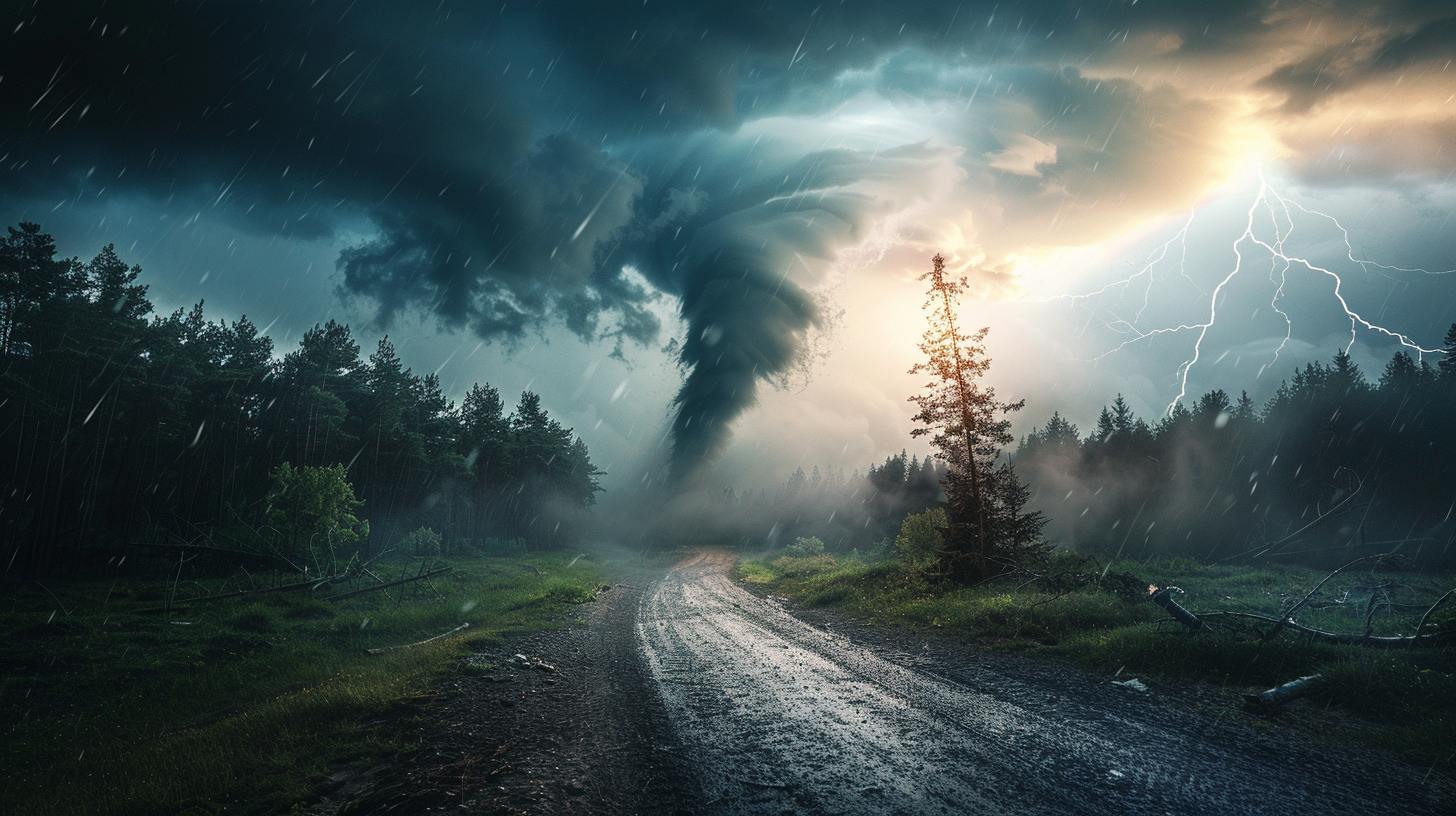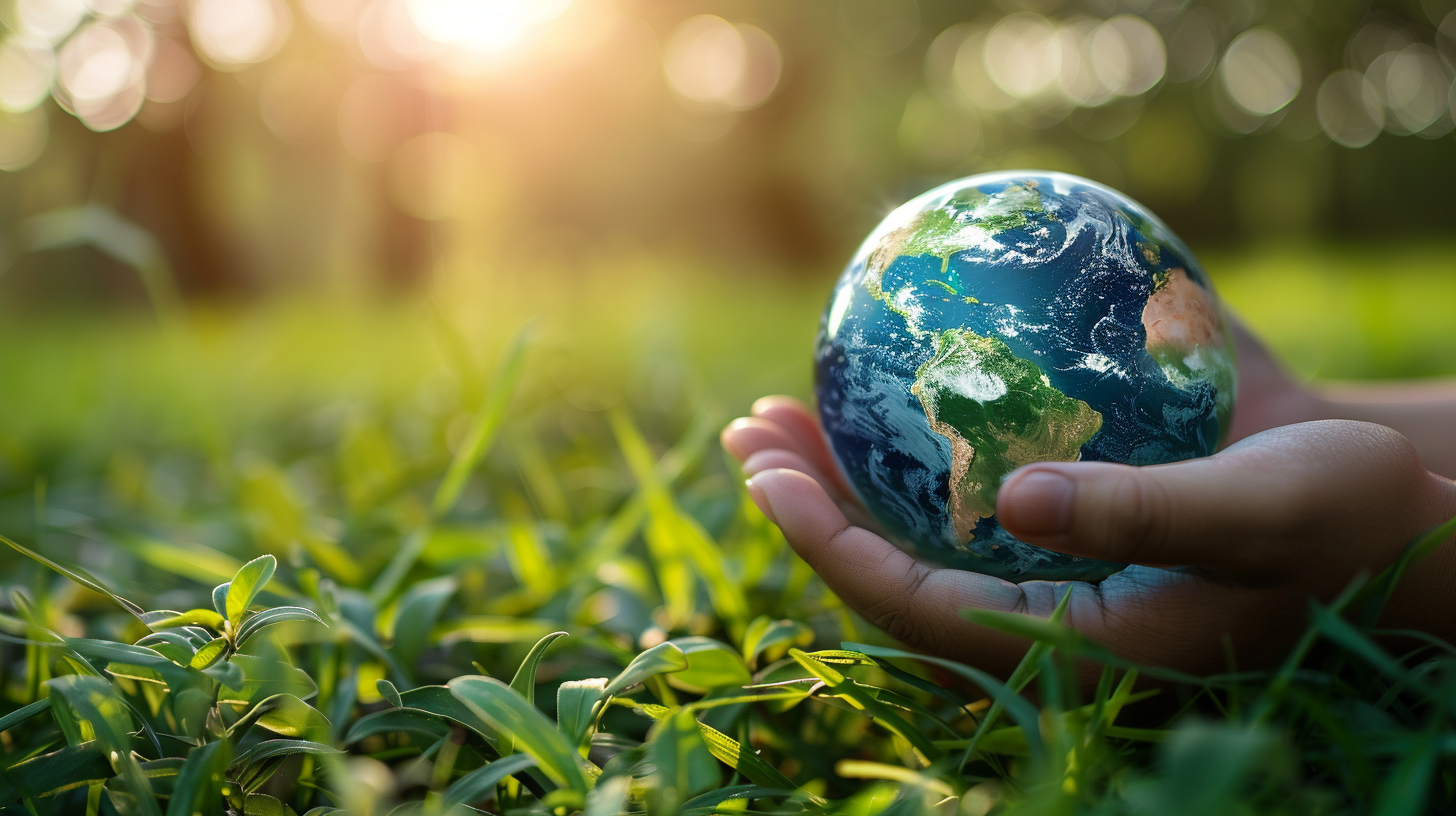Table of Contents Show
Like a pot simmering on the stove, the Earth’s climate is gradually heating up, and we’re starting to feel the bubbles of extreme weather patterns. We’ve observed hurricanes gaining strength, wildfires becoming more rampant, and droughts stretching longer than ever before. These aren’t random occurrences; they’re the fingerprints of climate change on our planet’s weather systems. As we peel back the layers on the science of climate change and its impact on extreme weather, we find ourselves at the threshold of critical discoveries. What lies ahead could redefine our understanding and prompt us to rethink our approach to this global challenge.
Key Takeaways
- Climate change exacerbates extreme weather events, making them more frequent and severe.
- Rising temperatures fuel more powerful hurricanes and increase wildfire frequency.
- Disrupted precipitation patterns lead to severe droughts and heavy rainfall events.
- Increased heat contributes to longer drought periods and shifts in vegetation, making landscapes more flammable.
The Science of Climate Change
To grasp the impact of climate change on extreme weather patterns, we must first comprehend its scientific foundation. It’s about recognizing how our planet’s temperature is inching upwards due to the greenhouse gases we’re releasing into the atmosphere. These gases trap heat, causing the Earth’s average temperature to rise, which in turn disrupts weather systems worldwide.
We’re seeing shifts in climate patterns that have remained stable for millennia, and it’s critical we comprehend why. The science is clear: human activities, especially the burning of fossil fuels and deforestation, are the primary culprits. This isn’t just about warmer days; it’s about how heat influences the entire climate system, leading to more extreme and unpredictable weather.
As we explore deeper, it’s evident that the warming planet doesn’t just mean hotter summers but affects precipitation patterns, leading to both severe droughts and heavy rainfall. These extremes threaten our freedom to live safely in our communities, grow our food, and maintain our way of life.
Understanding the science of climate change arms us with the knowledge to advocate for policies that protect our planet and our freedoms. It’s not about fear; it’s about being informed and proactive. We’ve got the power to make changes that guarantee a stable climate for future generations. It’s about taking responsibility for our actions and working together to curb the emissions driving these changes. Let’s embrace the challenge and safeguard our freedom to thrive on a healthy planet.
Hurricanes: Intensity and Frequency
Amidst the broader narrative of climate change, we’re witnessing a disturbing trend in the behavior of hurricanes, with their intensity and frequency increasing at an alarming rate. This shift isn’t just a minor blip in the weather patterns we’ve grown accustomed to; it’s a stark warning that the freedom to live as we’ve always done is under threat. Our choices now will determine the kind of world we’re leaving for future generations.
Let’s dive deeper into why this is happening. Warmer ocean temperatures, a direct consequence of climate change, serve as fuel for hurricanes, making them not only more frequent but significantly more powerful. We’re not just talking about stronger winds; we’re seeing hurricanes retain their intensity for longer periods and over larger areas, leading to unprecedented levels of destruction. This isn’t a distant problem—it’s happening now, and it’s affecting millions of people globally.
We’ve got to acknowledge the elephant in the room: our actions are contributing to this escalation. However, this realization isn’t a cause for despair but a call to action. There’s a sense of freedom in knowing that we have the power to change the course of our future. By adopting more sustainable practices and supporting policies that reduce carbon emissions, we’re not just fighting for the environment; we’re fighting for our freedom to live on a planet that’s safe and hospitable.
Wildfires: A Growing Threat
We’re now turning our attention to the escalating issue of wildfires, a critical aspect of extreme weather patterns linked to climate change. It’s clear that wildfires are becoming more frequent, highlighting the urgent need to understand their connection to climate change and explore effective mitigation and adaptation strategies. By tackling these points, we aim to shed light on the growing threat of wildfires and the steps we can take to address it.
Increasing Wildfire Frequency
Our planet is witnessing a dramatic rise in the frequency of wildfires, a dire consequence of climate change. We’re facing unprecedented challenges, yet we’re also empowered to act more decisively than ever. Embracing innovative strategies and technologies can lead us towards mitigating these disasters, ensuring our freedom to thrive amidst changing conditions.
| Year | Wildfires Reported |
|---|---|
| 2018 | 58,083 |
| 2019 | 67,743 |
| 2020 | 78,792 |
| 2021 | 84,059 |
This table underscores a worrying trend: wildfires are not just more frequent; they’re escalating at an alarming rate. It’s a clear call to action. We must adapt and innovate, leveraging every tool at our disposal to protect our communities and preserve our way of life against the backdrop of an evolving climate.
Climate Change Connections
The escalating threat of wildfires, directly linked to climate change, compels us to examine and understand these connections more deeply. As we investigate into the heart of this issue, it’s clear that our freedom to thrive in safe environments is at stake. Let’s explore how climate change fuels this growing menace:
- Increased temperatures lead to drier conditions, turning forests into tinderboxes.
- Longer drought periods diminish water sources, exacerbating fire intensity.
- Shifts in vegetation patterns result in more flammable landscapes.
- Extreme weather events, like lightning strikes, become more frequent ignition points.
Understanding these connections empowers us to demand and enact change, ensuring our communities and natural habitats remain vibrant and resilient against the backdrop of a warming planet.
Mitigation and Adaptation Strategies
Recognizing the dire consequences of climate change on wildfire prevalence, it’s imperative we explore effective mitigation and adaptation strategies to safeguard our communities and ecosystems. We must prioritize forest management practices, including controlled burns and the removal of deadwood, to reduce fuel for these fires. Investing in advanced early warning systems will empower us to act swiftly, minimizing damage and protecting lives. We also need to advocate for and implement more sustainable land-use policies, making sure that development doesn’t encroach on fire-prone areas. Additionally, educating communities on fire safety and preparedness can notably reduce risk. By embracing these strategies, we’re not just reacting to the threat; we’re taking proactive steps to make sure our freedom and security in the face of increasing wildfire risks.
Droughts and Water Scarcity
We’re witnessing an alarming increase in droughts and water scarcity as climate change intensifies. It’s reshaping our world in ways we can’t ignore, pushing us towards taking immediate actions to safeguard our freedom to live, grow, and thrive on this planet. The consequences of inaction are too dire to contemplate, affecting every aspect of our lives from the food we eat to the water we drink.
The impact of these changes is not just a pivotal threat; it’s happening here and now. To illustrate, let’s consider:
- Agricultural productivity is plummeting, as crops wither under the scorching sun, threatening food security and livelihoods.
- Water sources are drying up, leaving communities, both human and wildlife, in a desperate search for the most basic necessity of life.
- Economic stability is at risk, with industries reliant on water facing unprecedented challenges, driving up costs and reducing access.
- Conflict over dwindling resources is becoming more common, as people fight over what little water is left.
We’re at a critical juncture. The choices we make today will set the course for our future, impacting generations to come. It’s about more than just adapting to changes; it’s about fighting for our right to a world where everyone has access to the resources they need to live. We have the power to alter this trajectory, but it requires collective action now. Let’s not wait until it’s too late to appreciate what we’re risking. The time to act is now, for our planet and for our freedom.
Rising Sea Levels and Flooding
As climate change accelerates, rising sea levels and increased flooding are reshaping coastlines and communities at an alarming rate. We’re witnessing an unprecedented transformation of our natural landscapes, and it’s clear we need to adapt swiftly to preserve our freedom to live and thrive in these changing environments.
The relentless melting of polar ice caps and glaciers contributes notably to this phenomenon. As they dwindle, they pour vast amounts of water into our oceans, causing sea levels to rise. This isn’t a distant threat; it’s happening now, and the impact is tangible in coastal areas worldwide. We’re seeing beaches erode, islands disappear, and saltwater encroach into freshwater resources, challenging our ability to remain in places we’ve called home for generations.
In addition, the increase in sea levels amplifies the effects of storm surges and tropical cyclones. We’re not just talking about more water; we’re facing more powerful and destructive events. These surges can inundate coastal communities, destroying homes, infrastructure, and ecosystems. The freedom to live safely in coastal areas is under siege, and we must acknowledge this reality.
Adapting to these changes requires innovative thinking and proactive measures. Whether it’s building sea walls, restoring natural barriers like mangroves and wetlands, or rethinking urban development, we have the tools and knowledge at our disposal. We must prioritize actions that not only protect our communities but also preserve the natural balance that sustains them.
Facing rising sea levels and increased flooding head-on, we can turn these challenges into opportunities for resilience and innovation. It’s within our power to safeguard our freedom to live in harmony with our changing planet.
Health and Economic Impacts
Beyond the rising sea levels and increased flooding, it’s imperative to focus on the health and economic impacts of these environmental changes. We’re facing a future where our well-being and financial stability are at risk unless we take decisive action. The repercussions of climate change on health and the economy aren’t just numbers on a page; they’re real threats that demand our attention and immediate response.
Here are key points to ponder:
-
Spread of diseases: Warmer temperatures facilitate the expansion of disease-carrying vectors, like mosquitoes, into new regions. We’re already witnessing an uptick in illnesses such as malaria and dengue fever in areas previously unthreatened.
-
Agricultural productivity: Extreme weather events, from droughts to floods, are wreaking havoc on crop yields. This not only affects food availability but also pushes prices up, hitting our wallets hard.
-
Infrastructure damage: Increased severity of storms and wildfires leads to substantial economic losses. Repairing or replacing damaged infrastructure eats into public and private finances, diverting funds from essential services or development projects.
-
Healthcare costs: The rise in heatwaves and pollution levels escalates healthcare demands, straining systems and increasing expenses for families and governments alike.
We’re all in this together, and it’s high time we unite to mitigate these impacts. The path to safeguarding our health and economic future lies in embracing sustainable practices and advocating for policies that address the root causes of climate change. Let’s claim our freedom to live in a world where we’re not constantly threatened by the consequences of our actions on the environment.
Conclusion
As we’ve explored the heart of climate change, it’s clear our world’s weather is transforming dramatically. Imagine hurricanes as more powerful beasts, wildfires as relentless dragons, droughts as suffocating grips on our water sources, and rising seas as encroaching giants. These aren’t just scenarios; they’re our reality. The toll on our health and economies is undeniable. Together, we must face these challenges head-on, acknowledging their interconnectedness and fighting back with unified, innovative solutions.








